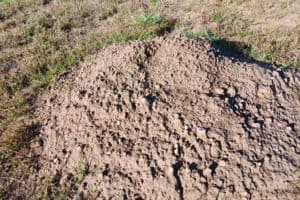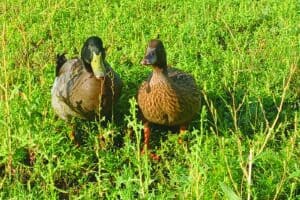Longtime local journalist Bill Radford and his wife, Margaret, live on 5 acres in the Falcon area with ducks, chickens, rabbits, dogs, cats, two noisy parrots, goats and two horses. Contact Bill at billradford3@gmail.comDo you ever wonder where road names come from? I often do while I’m driving county roads. Garrett Road: Who was Garrett? Or Jones? Or Curtis? Who was Cathy (Cathys Loop), and why did she get her own loop?Thanks to Dave Rose, chief public information officer for El Paso County, I have at least some answers.Many county roads are named after early ranchers and settlers in the area, he explained in an email. “In the same general category are roads where only one person lived on that path, and the road was named for that one person,î Rose said.Many other roads are named for destinations. Franceville Coal Mine Road, for example, went to the Franceville Coal Mine ñ- “now a hole in the ground in a pasture north and east of Calhan,” he said.†”People used to bring their horse-drawn wagons to the Franceville Coal Mine to buy coal for their heating stoves.” (The mine operated from 1882 through 1898, according to a report by the U.S. Geological Survey.)Alta Vista Road led to Alta Vista, a settlement north and east of Calhan.†”The school building is still there, Iím told,” Rose said.†”It was apparently a thriving community.” (There is also an Alta Vista Road in Colorado Springs.)Rose also explained the evolution of road naming. In the earliest days of the county, îAll the roads were ‘RR’ ó rural routes numbered according to a standardized numbering scheme established by the U.S. Post Office,î he said.ìEventually, farmers and ranchers found that if they were good friends with the local postmaster, they could probably get the road named for their ranch or farm ñ- since that was the only place the road went.†Besides, a number on a numbered street was frequently confusing, making it difficult to deliver the mail.”As the county acquired land use powers through state-approved legislation, it began to set some rules that would help emergency responders.†Even though there were multiple Smith farms, you just couldnít have multiple Smith Farm roads. Eventually, the business of approving street names moved away from the postmaster to County Planning and subsequently to Pikes Peak Regional Building and El Paso/Teller 9-1-1.† Typically today street names are proposed by the developer, and the data base is maintained by Regional Building and 9-1-1.”I dug up some information on road namesakes.
- Judge Orr Road: James A. Orr served as El Paso County Court judge from 1899 to 1902. Orr emigrated with his family to the U.S. from Scotland in 1866 at age 6. He opened his first law practice in Kansas. Upon moving to Colorado, he opened a practice in Gillett, now a ghost town near Cripple Creek; it was there that he became partners with Charles L. McKesson, who later became mayor of Colorado Springs. When McKesson opened an office in the Springs, Orr joined him. According to Orr’s obituary in The Gazette, the firm of McKesson & Orr “was one of the pioneer law partnerships in the city.”
- Funk Road: Jesse Funk was born and raised in Calhan. He won the Medal of Honor for his actions while serving in the U.S. Army during World War I. His citation reads: “Learning that two daylight patrols had been caught out in No Man’s Land and were unable to return, Pfc. Funk and another stretcher bearer, on their own initiative, made two trips 500 yards beyond our lines, under constant machine-gun fire; and rescued two wounded officers.” After the war, Funk became a leading cattleman with a ranch south of Simla, according to “An Illustrated History of Ranching in the Pikes Peak Region” by Loren R. Whittemore.
- McCandlish Road: L.A.”Mac” McCandlish came to Colorado in 1923 for his daughter’s health, according to Whittemore’s book, and ended up owning various properties in the area. McCandlish was already familiar with the area, having bought cattle from here for eastern feed lots. In 1932, he was recognized as the biggest individual cattle shipper west of the Mississippi, according to Whittemore.
- Peyton Highway: The town of Peyton ñ- and thus Peyton Highway ñ- was named after an early settler, George Peyton. The town originally went by a different name: It began as Mayfield, surveyed and platted on Christmas Day 1888. It was renamed Peyton after a petition by residents for a post office was refused because postal officials feared Mayfield, Colorado, would be confused with Mayfield, California.
- Blaney Road: Presumably named for Henry Blaney, described in his 1948 obituary in the Colorado Springs Free Press as “a pioneer cattleman and rancher in the Falcon area for more than 60 years.” He came to the U.S. from Ireland at the age of 17, according to the obituary.






